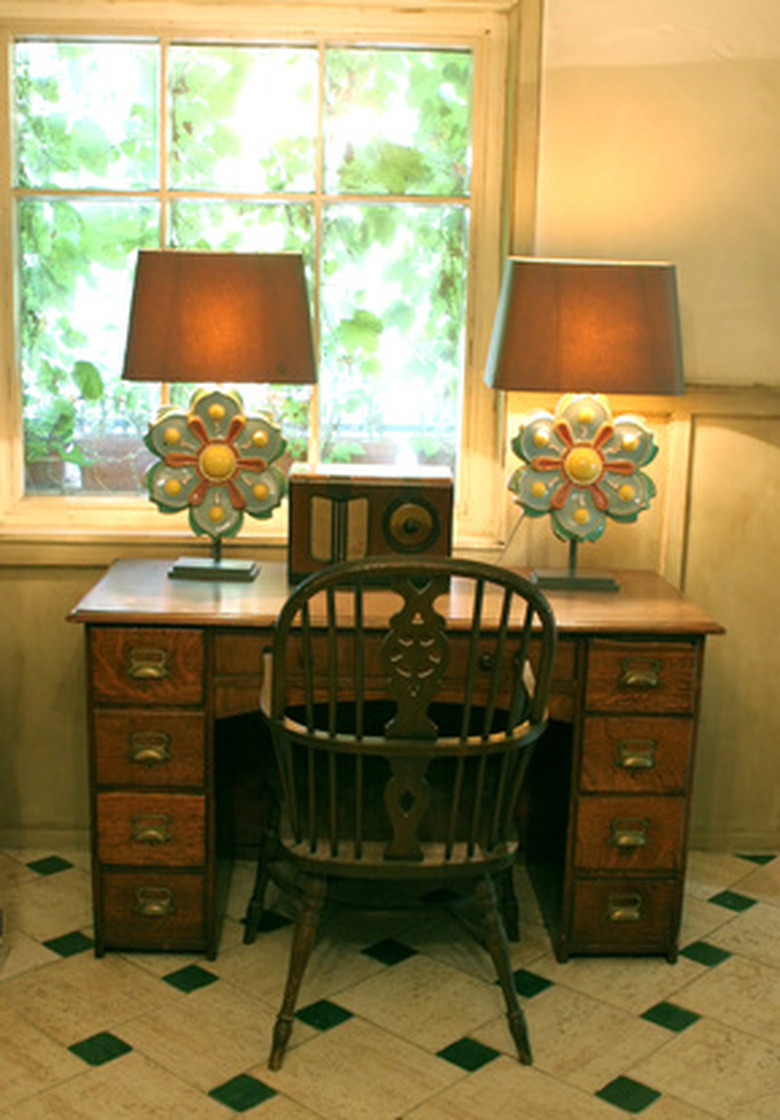Tips On Removing Plastic Laminate From A Table Or Desk
Plastic laminate is a common, durable surface often applied to desks, tables and other furnishings. It is used on items that take a lot of abuse and that require frequent cleaning. Unfortunately, the appeal of laminate is sometimes short lived. Although plastic laminate is durable, it is not indestructible. Chips, nicks and scratches become unsightly. Styles also change, leaving you with an outdated piece of furniture. Removing the laminate gives your desk or table a fresh start for new paint or stain as long as the surface beneath is still in good condition.
Start Clean
Start Clean
Before removing the laminate, clean the piece to remove anything that could transfer onto the desk or table. If the furniture is real wood, old ink or crayon marks could seep into the wood fibers when they are heated during the laminate removal process. Use caution with water. If the furniture base is metal, it could rust. If it is wood, water could create marks, soften the finish or cause the wood to warp. To remove any residue, use a gentle, nonflammable cleaner suitable for the material.
Apply Heat
Apply Heat
Heat guns look similar to a hairdryer, but they reach much hotter temperatures. Heat softens the plastic laminate, making it pliable. It also softens the adhesive used to join the laminate to the furniture. Use great care with a heat gun. Holding it too close can scorch the wood underneath. To prevent serious burns, never direct the heat toward your hands or other skin surfaces. Likewise, never touch any part of the gun except the handle and adjustment knobs or buttons. Wear gloves, and direct the gun toward one corner or edge of the laminate until it begins to shrink and soften.
Remove Laminate
Remove Laminate
Push the blade of a wide putty knife under the softened edge. Lift the knife slightly to raise the laminate in one small area at a time, gradually working farther back under the sheet. As the plastic becomes softer, peeling it up requires less effort. The plastic hardens again once the heat is moved to the next area, so slip an object like a rod or block under it to keep the laminate from sticking again. If the item is very large, cut the raised laminate with a sharp knife, and remove it to keep the area more manageable. Avoid breaking the laminate, as this can create a knife-like sharp edge. If lifting the laminate requires a lot of effort, it is not hot enough.
Remove Residue
Remove Residue
Heat and scrape up residual glue with a putty knife, or use an adhesive solvent. You may find that the surface under the laminate is not suitable for refinishing or painting. Often, a furniture surface is plywood or particle board, even if the rest of the piece is solid wood. Attach ultra-thin sheets of furniture-grade plywood to the top of the furniture in order to paint or stain as desired. Cut it to fit, and glue it to the surface with a roll-on adhesive. Covering rough edges with veneer strips makes the plywood top appear solid.
